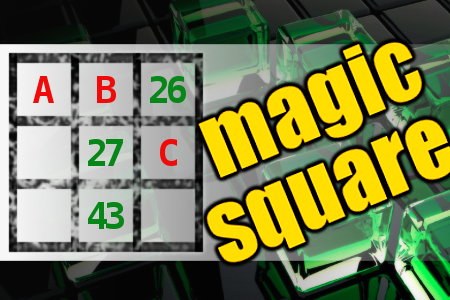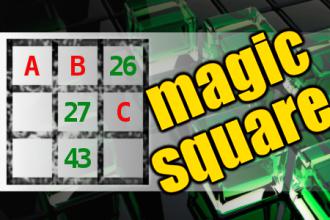MAGIC SQUARE: Calculate A*B+C
The aim is to place the some numbers from the list (2, 3, 4, 25, 26, 27, 42, 43, 44) into the empty squares and squares marked with A, B an C. Sum of each row and column should be equal. All the numbers of the magic square must be different. Find values for A, B, and C. Solution is A*B+C.Correct answers: 0
#brainteasers #math #magicsquare


